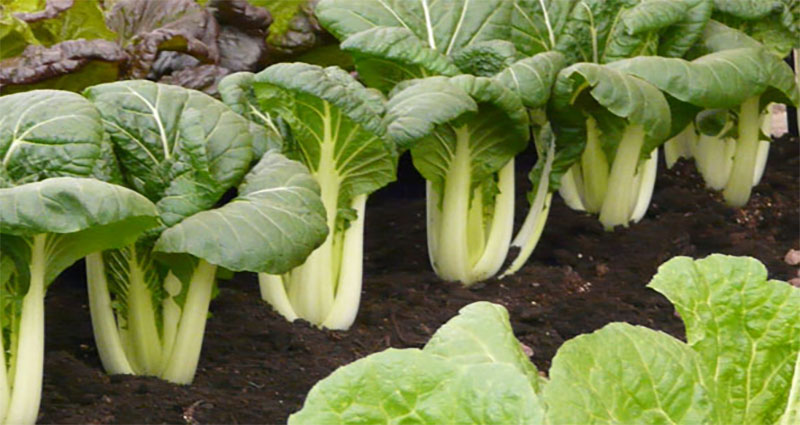Asian lettuces refer to types and varieties of leafy or mustard cabbage.
They have more or less high content of spicy mustard oils, high hardiness, and a long harvest period.
Some have curled or rounded leaves, while others produce pinnate, deeply lobed leaves. Leaf colour varies from dark red to light green. Flavours range from mild to spicy, so it’s easy to experiment with because they’re quick and easy to grow from an inexpensive packet of seeds.
Health benefits of Asian Greens
After many studies have proven that eating leafy greens is vital for building a healthy body and immune system. It helps strengthen the respiratory system and aids in blood cleansing. In addition, when you eat a lot of leafy greens, you can displace foods that contribute to many diseases, such as animal proteins.
Leafy green vegetables are also highly alkaline foods. As a result, alkaline minerals in the body neutralize acidic conditions caused by the environment. Therefore, green vegetables help replenish our alkaline mineral reserves and filter harmful substances.
Planting Asian greens in one’s garden
Asian greens do not require complicated care. However, regular and plentiful watering will be necessary for a good harvest. Soil moisture needs to be controlled because the plant is prone to rot if there is too much water. The leaves lose their bright colour and fade with a lack of moisture, but the greenery is quickly restored with timely watering.
It is recommended to water the culture under the root, avoiding soaking the leaves. For more accessible care, the soil between the rows is mulched. Thanks to the dense green cover, weeds on the beds do not take root.
The Asian plant is so easy to care for that there appeared a second name – cabbage for the lazy.
Since the plant belongs to the early maturing, it tends to accumulate nitrates in the leaves. Therefore, when choosing a fertilizer, give preference to natural fertilizers. Well-proven products are:
- liquid bio humus;
- a mixture of infusion of fermented grass and ash;
- organic fertilizers.
The use of mineral fertilizers is not recommended.
Asian salads: popular species and varieties
is the main component of almost all seed mixes. It is usually sown from the end of July, when the most significant heat has passed. Planted in a row, the distance between the rows: is 15 to 25 centimetres. Sow in weed-free seedbeds, with subsequent thinning to two to three centimetres from each other.
Spinach and any other greens can be grown in the greenhouse, at home, or in the open ground. You can get the earliest gardens if you grow spinach sprouts beforehand. For this purpose, at the end of March or the beginning of April, spinach seeds are sown in boxes, paper, or plastic cups filled with moist, loose, decontaminated substrates consisting of bio humus (1 part) and coconut fibre (2 pieces). A 2-3 cm thick layer of expanded clay is placed under the substrate.
Other species of leaf mustard (Brassica juncea), such as the relatively mild in sharpness red leaf mustard “Red Giant” or the hotter version “Wasabina,” reminiscent of Japanese horseradish (Wasabi), are also grown as a salad. Komatsuna and Bok Choy can be sown 25 centimetres apart. If you cut them two to three centimetres above the stem, new leaves with thick fleshy stems will produce sprouts again.









